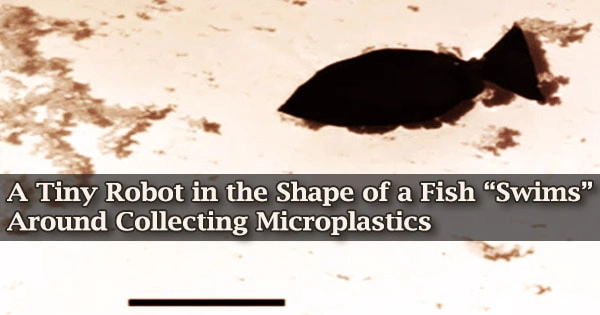Nearly all areas of the planet have microplastics, which are dangerous to animals if consumed. But once they find their way into the crevices at the bottom of rivers, it can be difficult to get rid of such tiny particles from the ecosystem.
Researchers have now developed a light-activated fish robot that “swims” fast across the surroundings collecting and eliminating microplastics from the environment, according to ACS’ Nano Letters. Microplastics have proven challenging to remove from aquatic habitats because they can get caught in nooks and crannies.
One suggestion is to access these toxins and clean them up using small, flexible, self-propelled robots. However, hydrogels and elastomers, which are the conventional materials for soft robotics, are easily harmed in aquatic conditions.
The interior surface of clam shells contains mother-of-pearl, sometimes referred to as nacre, which is a tough and flexible material. A microscopic gradient may be seen in nacre layers, which are composed primarily of silk protein filler on one side and a lot of calcium carbonate mineral-polymer composites on the other.
In order to develop a strong and flexible material for soft robotics, Xinxing Zhang and colleagues were motivated to try a similar type of gradient structure. They were inspired by this natural substance.
The researchers built composite nanosheets by joining molecules of β-cyclodextrin with sulfonated graphene. Then, various quantities of the nanosheet solution were added to polyurethane latex combinations.
The team built a tiny fish robot that was 15 mm (about half an inch) long from a material using a layer-by-layer assembly technique that produced an ordered concentration gradient of the nanocomposites through it. The robot moved forward by rapidly switching a near-infrared light laser on and off at a fish’s tail, causing it to flap.
The robot was able to swim at a pace of 2.67 body lengths per second, which is quicker than other soft swimming robots previously recorded and about equivalent to the speed of actively moving phytoplankton in water.
The researchers demonstrated how the swimming fish robot could regularly absorb and carry adjacent polystyrene microplastics. Additionally, the substance has the capacity to mend itself after being cut while retaining its capacity to absorb microplastics.
The fish robot’s speed and endurance, according to the researchers, make it suitable for monitoring microplastics and other pollutants in challenging aquatic conditions.
The National Natural Science Foundation of China Grants, the Sichuan Provincial Natural Science Fund for Distinguished Young Scholars, and the National Key Research and Development Program of China Grants were all sources of financing for the writers.
















